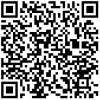What is an echocardiogram?
An echocardiogram is a common test used by doctors to help diagnose different types of heart condition and disease. It uses ultrasound (sound waves) to bounce off various parts of the heart and these echoes are recorded into an image. These images can be made into a moving image which shows the function of the heart. This is then used to identify areas of the heart which are not functioning correctly or may be diseased or for blockages.
The 4 types of echocardiograms
There are generally 4 types of echocardiograms
- Stress Echocardiogram – described in more details in another section under that heading
- Transthoracic
- Doppler Echocardiogram
- Transesophageal
Transthoracic Echocardiogram or TTE
Transthoracic echocardiogram or TTE is a diagnostic tool used by doctors to evaluate heart size. It is a very common procedure and is not invasive. It does not require any type of sedation.
Your doctor may request this test to check for:
- blocked or narrowing arteries,
- blood clots,
- accessing the risk of heart disease or checking on existing heart disease,
- heart palpitations, shortness of breath.
- chest pain
Doppler Echocardiogram
A Doppler echocardiogram is used to detect the blood speed and direction within the heart. It allows via ultrasound the doctors to see how the blood flows through the chambers of the heart. It uses a transducer to do this. A transducer is a handheld device which is pressed against the body at various key points. Using this the doctor can have a better view of what may be causing the issues. A doppler echocardiogram can be used alongside other tests like transthoracic, stress or transesophageal echocardiograms.
Transesophageal Echocardiogram or TEE
A transesophageal echocardiogram or a TEE is a diagnostic tool used by doctors when they need to capture an image of the upper chambers of the heart.
This test is done by inserting a probe down the throat and into the oesophagus. The probe is thin and can get a closer view of this part of the heart than other tests. For this procedure the patient will need to be sedated and have throat numbing medication administered.
This procedure can also be used during cardiac catheterization or other heart surgery.



